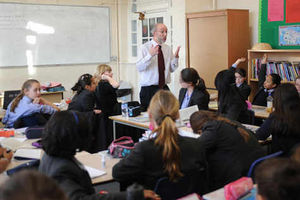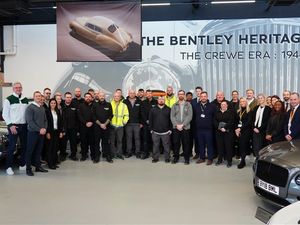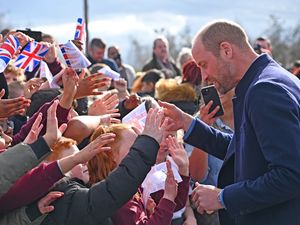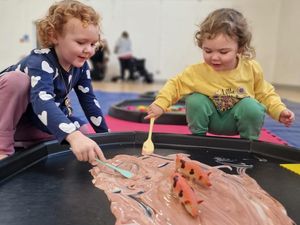How interactive technology is changing the classroom
If you walk into most classrooms in the UK today, you will soon notice the big screen in the middle of the room at the front.

If you walk into most classrooms in the UK today, you will soon notice the big screen in the middle of the room at the front.
It's not a television or movie screen, but an interactive whiteboard, and it can be used for many activities within the classroom enabling the teachers and students to present, share, interact and most importantly collaborate with each other. The board itself connects to a computer and a projector, displaying whatever is on the computer screen.
When this technology first appeared in the UK in the late 1990?s it was referred to as an electronic blackboard, and, at a very low level, some are still used in this way.
However, over the last decade, the commercial companies have developed their authoring software and tools, making the technology a much more sophisticated technology for learning and teaching. Publishers are also developing some excellent teaching resources.
The key for the teacher is the 'interaction'; students can go to the board, share their ideas, make notes and save them. Students can access the lesson from home and when it comes to revision, they can have the actual lesson right in front of them.
In comparison, I am sure we can all remember the days when the teacher quickly rubbed out the chalk left from the previous lesson leaving you with no chance of ever catching up!
Imagine you wanted to teach children how to show how the organs of the human body are connected…you can use the interactive whiteboard to connect the organs to the correct places and see the heart beating…the lungs breathing and the position of the kidneys. The body can be rotated, made bigger and smaller and the teacher can add links to useful websites all at the click of a button. The visual animations are in colour and help to bring the science lesson to life.
Geography lessons take on a whole new meaning; the twenty-nine crumpled atlases used by every year group with pages missing, have long since been replaced by digital maps on the interactive whiteboard. The teacher and students can highlight new places, zoom in and manipulate the images so that an 'aerial view' becomes the 'street view'. The students can compare how roads and landscapes have changed over time. The lesson is no longer about copying the map and labelling it. The teacher knows that students can access the digital map in their own time to explore more details. The student can explore web-links and in seconds, the world becomes a very small place.
Last week, I had the pleasure of delivering one of the first courses at the Future Classroom Lab in Brussels. Eighteen delegates from eight countries including Poland, Latvia, Iceland, Spain, France, Portugal, Germany and Belgium. The teachers were all e-twinning experts and have strong links with schools across the globe; but for some of them, the interactive whiteboard was a new tool.
During the two days, we explored the basic tools, the features of a good lesson and how to connect to other devices. Using the interactive whiteboard and an internet connection, the teacher can connect to another classroom (anywhere in the world) and students can work on the same piece of work at the same time. This means that students can collaborate across countries, not just across the classroom.
It's amazing to think that children who are thousands of miles apart can share ideas and develop them on the same screen. Teachers and students recognise that learning is global.
The next stage for me is to develop some ideas for Future Classroom Scenarios; hopefully we won't be replacing teachers with robots!
Take a look at the website for the Future Classroom Lab http://fcl.eun.org/





